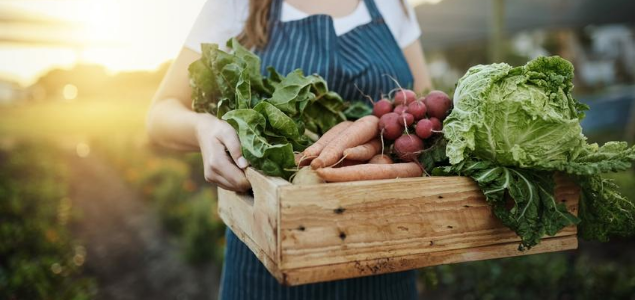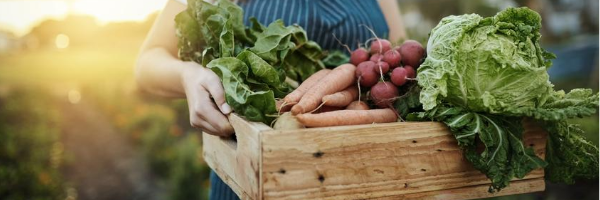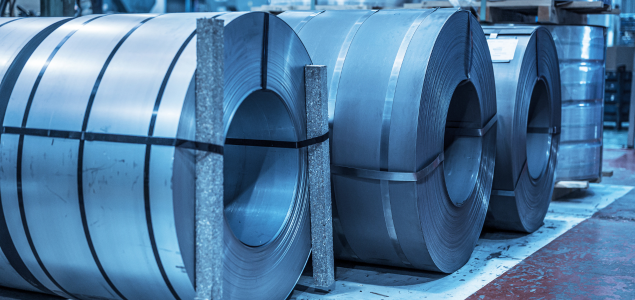
French agriculture is at a crossroads. Although it contributes to our food security, the "conventional" agricultural model is damaging environment without providing all producers with sufficient income. Agriculture accounts for 20% of greenhouse gas emissions in France, not to mention its contribution to the collapse of biodiversity and the pollution of water and soil. And despite subsidies, a quarter of farmers live below the poverty line, according to INSEE. It is therefore urgent to change the model. In this case, agroecology constitutes a sustainable alternative, supported by the public authorities. But is it profitable? Yes for organic farming in the majority of cases, not always for the others. This is the result that Alice Gremillet and Julien Fosse achieve after evaluating the environmental and economic performance of agroecological farms. An assessment based on the analysis of economic data from the available scientific literature, and modelling at the scale of a typical cereal farm.
Agroecology: what are we talking about?
Agroecology is based on a fundamental principle: making optimal use of the resources provided by nature to develop an agriculture that uses the minimum amount of synthetic inputs (fertilizers, pesticides or antibiotics) and to increase the resilience and autonomy of farms.
In concrete terms, Alice Gremillet and Julien Fosse identify twenty-three specifications or reference frameworks that claim to be based on the major principles of agroecology, both public and private, some of which benefit from public financial support, others not. But what do they really cover? To answer this question, the authors have calculated, for each one, an "environmental requirement score", i.e. an indicator that takes into account the reduction in the use of fertilizers and pesticides, and the importance of practices with positive effects on the preservation of biodiversity, soil and water resources.
According to this score, two major families of agroecological farms stand out. In the first, there are farms with a high level of environmental requirements for which the entire production system has been rethought, according to specifications benefiting from consumer recognition through public labels. This is particularly the case for organic farming (“agriculture biologique” - AB). European and national certification, AB is supported by CAP conversion aids. At the end of 2018, 7.5% of the French agricultural area and about 41,600 national farms (9.5% of the total) were cultivated organically. Permaculture and three private standards (Demeter, Nature et Progrès and Bio Cohérence) add additional constraints to AB requirements. The High Environmental Value (“haute valeur environnementale” - HVE) certification also falls into this first family and concerns 5,399 farms as of January 1, 2020.
The second family includes farms whose production system, despite additional commitments, is still based on the principles of mainstream agriculture. Belonging to this family are the farms committed to the systemic agri-environmental and climatic measures of the CAP (MAEC system) which benefit from subsidies, the 3,000 low-input farms of the DEPHY network, and private charters such as Lu'Harmony or AgriCO2 which certify 1,700 and 2,800 farmers respectively.
Transition to agroecology: profitable or not?
The first means used by the authors to evaluate the profitability (excluding subsidies) of the reference systems studied: analysis of economic data published in the scientific literature (INRA, INSEE, CERFRANCE, etc.). Although the indicators vary (gross or direct margin, gross operating surplus...), as well as time scales and sectors (viticulture, market gardening, cereals...), their review of the literature clearly shows that agroecological farms, AB in particular, are generally more profitable than conventional farms, even though their environmental requirements are high.
Why is this? Because organic farms save on input costs (fertilizers, plant protection products) and because the prices of organic products are higher. In addition to this, prices are less volatile and there is a greater diversity of production, which together ensure more stable yields over the long term. These benefits more than compensate for the costs of lower yields and the additional costs of mechanized weeding which requires more labor. An example to prove this: in 2016 the gross operating surplus (GOS) of conventional beef farms was 3 euros per hectare compared to 180 euros for organic farms. More generally, the scientific literature shows that the gain in direct margin in AB, although highly variable according to the production, is on average 103%.
To generalize these results, Alice Gremillet and Julien Fosse then modelled (with GAMS software) a 100-hectare field crop farm, first in conventional operation and then with the additional constraints of five specifications: AB, DEPHY economical and DEPHY very economical in inputs, HVE B and Lu'Harmony. Thanks to this, they were able to estimate and compare the global direct margins of this typical operation, in conventional and sub-standard operation. A way to simulate its agroecological transition in order to test its profitability. Result: AB is the only reference system (among those tested) to bring medium-term benefits to the farmer, with a gain in direct margin of around 25% at the end of the transition (again excluding CAP aid). Organic agriculture therefore appears to be the most efficient from an economic and environmental point of view.
How can we better support the agroecological transition?
Aid from the Common Agricultural Policy (CAP) ensures the profitability of European farms in general. Some specific subsidies are moreover dedicated to agroecological standards. For example, AB benefits from conversion subsidies.
Hiatus: these aids are not proportionate to the environmental service offered by the farms, nor even always to the actual loss of income linked to their agroecological transition. To show this, the authors of the study compared the amount of aid granted to farms with their "environmental requirement score"... and found that they are uncorrelated. In arable crops, for example, the total amounts of aid per hectare are higher for the MAEC systems reference frame than for the AB reference frame. In other words: it is the less environmentally demanding production that receives the more.
To better sustains the ecological transition of our agriculture therefore requires a real adjustment of the public aid paid to the financial efforts made by farmers to reduce their environmental impacts or a change in approach to better remunerate the environmental service provided. This approach could consist of a bonus-malus system, with the proceeds of the malus on the use of pesticides and fertilizers coming to finance the bonuses for agroecological practices, for example.
Regarding the reference systems studied, Alice Gremillet and Julien Fosse put forward three proposals. For the "high environmental requirement" standards, it would seem necessary to strengthen their recognition by the consumer to allow a willingness to pay that fairly remunerates the farmer; this is the case of the HVE standards. For the "high environmental requirement" standards, which present economic benefits for farmers, it would be desirable to better take into account the greater intensity of labor, which is the source of additional costs, in the parameterization of the public aid systems that are allocated to them. Finally, for reference systems with "low environmental requirement scores" but at little or no cost, it would be necessary to disseminate and generalize good practices, particularly in terms of reducing pesticide use.
Adjusting subsidies and providing better support for standards with high environmental requirements are necessary levers to develop agroecology. But they will not be sufficient. To ensure the transition of our food system towards sustainability, consumer practices must also evolve, particularly towards a less and better meat diet. It is on this dual condition that the French food system will be able to change in favor of a more sustainable model that will enable us to feed the population, support producers with dignity, reduce our dependence on synthetic inputs, and improve soil protection and water quality.
READ THE FULL DOCUMENT IN FRENCH
The opinions expressed in these documents are those of the authors
and are not intended to reflect the government's position.







